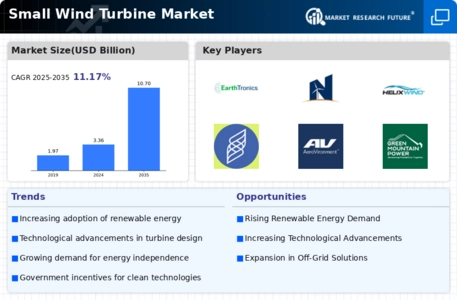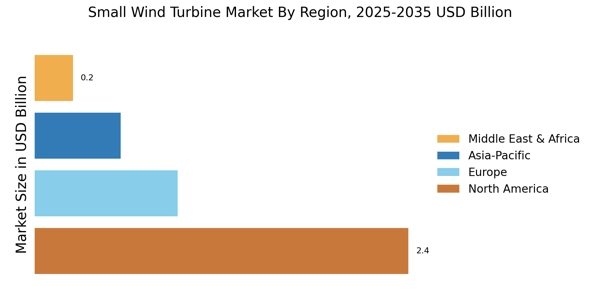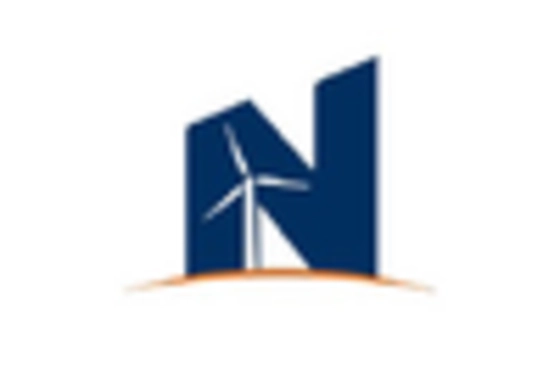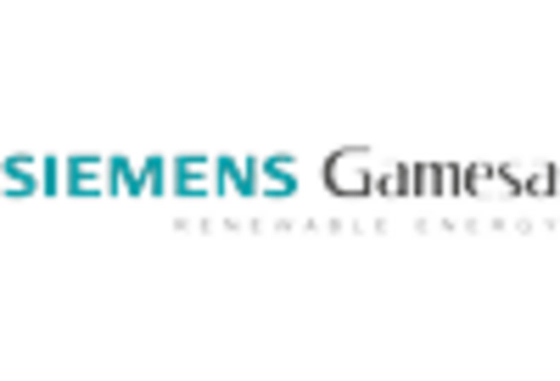Increasing Energy Costs
The rising costs of conventional energy sources are driving interest in the Small Wind Turbine Market. As fossil fuel prices fluctuate and environmental concerns mount, consumers and businesses are seeking alternative energy solutions. Small wind turbines present a cost-effective option for energy generation, particularly in remote or off-grid locations where traditional energy infrastructure is lacking. The levelized cost of energy (LCOE) for small wind systems has become increasingly competitive, with some estimates indicating that it could fall below that of fossil fuels in the near future. This economic advantage, coupled with the potential for long-term savings on energy bills, is likely to encourage more individuals and organizations to invest in small wind technology, thereby boosting market growth.
Technological Innovations
Technological advancements play a crucial role in shaping the Small Wind Turbine Market. Innovations in turbine design, materials, and energy storage systems have significantly improved the efficiency and reliability of small wind turbines. For instance, the introduction of advanced blade designs has enhanced energy capture, allowing turbines to generate more power even at lower wind speeds. Additionally, the integration of smart technology, such as IoT devices, enables real-time monitoring and optimization of turbine performance. These advancements are likely to reduce the cost of energy production, making small wind turbines more competitive against traditional energy sources. As technology continues to evolve, the market is expected to witness a surge in adoption rates, further propelling the growth of the small wind turbine sector.
Supportive Regulatory Frameworks
Supportive regulatory frameworks are instrumental in fostering the growth of the Small Wind Turbine Market. Governments worldwide are implementing policies and incentives to promote renewable energy adoption, including tax credits, grants, and feed-in tariffs. For example, certain regions have established streamlined permitting processes for small wind projects, reducing barriers to entry for potential investors. This regulatory support not only encourages the installation of small wind turbines but also enhances investor confidence in the market. As a result, the market is projected to expand, with estimates suggesting a potential increase in installations by over 20% in the coming years. Such favorable conditions are likely to attract new players and stimulate innovation within the industry.
Rising Demand for Renewable Energy
The increasing The Small Wind Turbine Industry. As nations strive to meet their energy needs sustainably, the demand for small wind turbines is expected to rise. According to recent data, the renewable energy sector has seen a compound annual growth rate of approximately 8% over the past few years. This trend indicates a growing acceptance of wind energy as a viable alternative to fossil fuels. Furthermore, small wind turbines offer a decentralized energy solution, which aligns with the global shift towards localized energy production. This shift not only reduces transmission losses but also enhances energy security, making small wind turbines an attractive option for both residential and commercial applications.
Environmental Awareness and Sustainability
Growing environmental awareness and a commitment to sustainability are significant drivers of the Small Wind Turbine Market. As climate change concerns escalate, individuals and businesses are increasingly prioritizing eco-friendly energy solutions. Small wind turbines offer a clean, renewable source of energy that contributes to reducing carbon footprints. The market is witnessing a shift in consumer preferences, with more people opting for sustainable energy options. This trend is supported by various environmental organizations advocating for the adoption of renewable technologies. Furthermore, the potential for small wind turbines to provide energy independence aligns with the values of sustainability-conscious consumers. As awareness continues to rise, the demand for small wind turbines is expected to grow, further solidifying their role in the renewable energy landscape.


















Leave a Comment